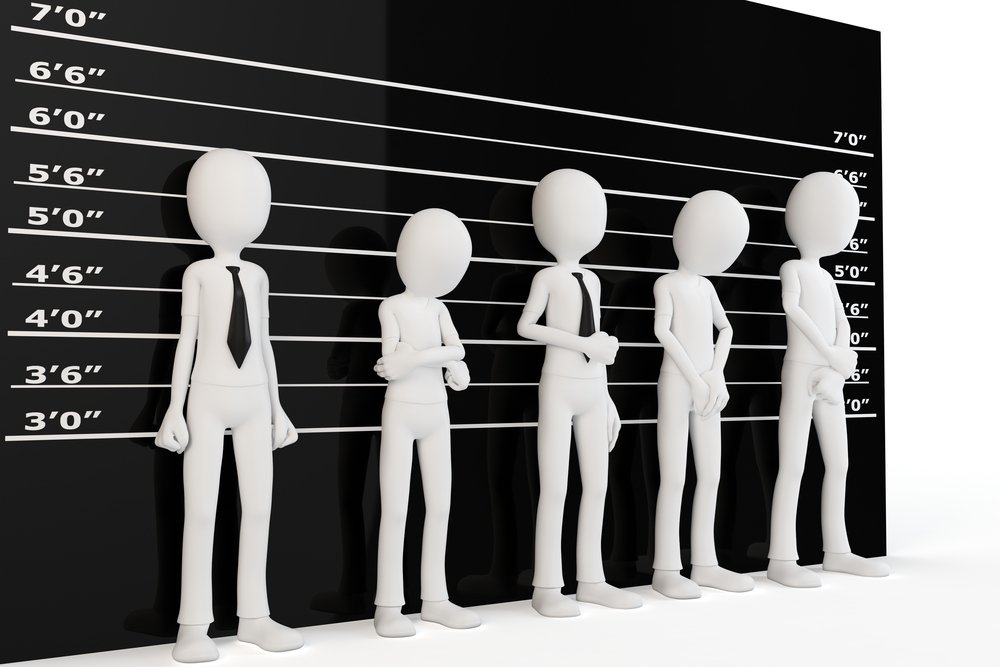Mistaken identification is a leading cause of wrongful convictions in the United States. Eyewitness error has been cited as a principal factor in over 70% of cases overturned as a result of DNA testing.1
The Las Vegas Metropolitan Police and other Nevada law enforcement agencies don’t intentionally rely on mistaken identity in order to get convictions. But they – as well as jurors – are conditioned to believe that eyewitnesses who in good faith ID suspects are correct.
That’s where we come in. Our caring Las Vegas and Reno criminal defense attorneys understand how witness misidentification leads to wrongful convictions. We know how to put witnesses to the test to ensure that the wrong person does not go to jail for a crime he or she did not commit.
To help you better understand how we protect against mistaken eyewitness identification, our Las Vegas criminal defense lawyers discuss the following, below:
- 1. Your due process rights
- 2. The principles of mistaken identification
- 3. What an experienced Nevada criminal lawyer can do for you

Eyewitness error has been cited as a principal factor in over 70% of cases overturned as a result of DNA testing.
1. Your due process rights
The main law protecting people from unfair identification procedures is the due process clause of the 14th Amendment. Section 1 of the 14th Amendment provides that no state shall “deprive any person of life, liberty, or property, without due process of law…”2
The Supreme Court of the United States has long recognized that identification of a suspect may be challenged as a violation of due process when the procedure is unnecessarily suggestive and conducive to irreparable mistaken identification.3
As a practical matter, however, both federal and Nevada courts are often reluctant to overturn cases on the basis of mistaken identity. This makes it critical to have a lawyer who is up-to-date on the science of eyewitness testimony.
An attorney who understands how eyewitness errors occur can bring in appropriate experts and ask them the right questions to make the judge and the jury understand how a witness – even a well-meaning one – could have gotten it wrong.
2. The principles of mistaken identification
Mistaken identification is caused by two primary factors: estimator variables and system variables. Estimator variables are factors outside the control of the police and district attorney. System variables are factors that are within the control of those conducting the investigation.
2.1. Estimator variables (outside police control)
Estimator variables include factors such as:
- Crime scene conditions. When lighting is poor or sightlines are impeded, mistaken identity becomes more likely.
- Race. Research shows that people have more difficulty identifying a person of another race.4
- The presence of a weapon. Research has also shown that when someone committing a crime uses a weapon, people tend to focus on the weapon instead of the perpetrator’s face.5
- Violence. Studies have shown that a person’s ability to recall details of an event is likely to be worse when the event is violent. This is due to the release of stress hormones during a violent event. Stress makes it more difficult to remember things accurately.6
- Passage of time. The more time that passes after an event, the greater the likelihood that details will fade or that the witness will hear things that influence his or her memory of the event.
2.1.1. How a lawyer deals with estimator variables
Of the two types of variable, estimator variables are usually easier to challenge.
Our lawyers will ask witnesses the right questions, including:
- Did the witness know or have contact with the defendant before the event?
- What were the lighting conditions at the crime scene? How well could the witness see the perpetrator? Does the witness have a vision problem?
- Did the perpetrator wear a mask or disguise?
- How far away was the witness from the perpetrator? Was the witness’s view obstructed by buildings, other people or parked cars?
- Was the witness drunk or high on drugs at the time of the event?
- How long was the perpetrator present? Was the witness there for the entire event?
- Was the witness frightened? Was the witness watching the perpetrator, the victim or the weapon?
- How much time passed between the event and the identification? Before being interviewed, did the witness “compare notes” with others or read or see media reports that may have influenced his or her memory?
2.2. System variables (within police control)
System variables involve suggestive techniques the police use to influence a witness to pick a particular suspect. They are generally more difficult to challenge than estimator variables.
System variables are not always intentional. But intentional or not, cops often do things to make a particular suspect stand out from others. When this happens, it greatly increases the danger of misidentification.

Police lineups are supposed to consist of a group of individuals with the same basic characteristics. In practice, however, they sometimes don’t.
2.2.1. Police techniques that increase system variables
The following are just some of the techniques cops use that can lead eyewitnesses to choose the wrong suspect:
The “field show-up”
In a “field show-up” the cops ask a witness to identify a single suspect they apprehend near the crime scene. For obvious reasons, a field show-up is more suggestive than a multi-person lineup. When a witness sees someone handcuffed and surrounded by officers near the crime scene, the context can lead the witness to conclude such person is the perpetrator – even if the witness has doubts.7
Police line-ups
Police lineups are supposed to consist of a group of individuals with the same basic characteristics. In practice, however, they sometimes don’t. A defendant might be the only person in the group with a certain shade of skin, for instance, or with tattoos or another distinguishing characteristic.
Consider a case in which a witness is shown a series of photo line-ups, with “mistaken” identifications omitted each time and fewer and fewer suspects. The 9th Circuit Court of Appeals has held that “Due process of law cannot be predicated on a systematic plan by prison officers to twist a photographic identification procedure in a manner calculated to obtain an identification of one they suspect.8
To minimize the likelihood of mistaken identification, experts recommend that cops use “blind” lineups. A “blind” lineup is one conducted by an investigator who is not otherwise involved in the case. When the person conducting the lineup doesn’t know who the suspect is, he or she is less likely to indicate–even subconsciously—that the witness should choose one person over another.
Another way of ensuring fairness is to use a “sequential” lineup. In a sequential lineup, the witness is shown suspects one at a time rather than together in a group. Sequential lineups protect against the problem of “relative memory.” This can happen when a witness picks the suspect who looks most like the perpetrator relative to other suspects. For example, several people might have noted that the perpetrator was tall. By putting the suspect in a lineup with shorter people, the cops can influence a witness to choose the taller person.
Many witnesses also walk into a lineup with the expectation that it will contain the person who committed the crime. To keep a lineup fair, an officer should advise the witness that the perpetrator may or may not be in the group — so the witness doesn’t make an identification just to get it over with or to placate the investigator.
Additionally, officers should reassure the witness that police will continue to investigate the crime even if the witness fails to pick a suspect.
Leading questions
Perhaps the most dangerous system variable is the leading question. For instance, an investigator might ask a witness what color hat a robber was wearing. This can create a false memory of a hat, even if one never existed.10
Compare this to the non-leading question, “What was the suspect wearing?”
Prosecutors often use leading questions to create a false image in the minds of the jury. A savvy Nevada criminal defense lawyer will object to leading questions and “rehabilitate” the witness on cross-examination.
2.2.2. How a good lawyer handles system variables
A single system variable that goes against you is usually not enough to get an eyewitness identification thrown out of court. However, sometimes system variables are enough to allow your Nevada defense attorney to bring a motion to suppress (exclude) the tainted line-up or other evidence. Without the evidence, the prosecutor’s case is weakened, leading frequently to a plea bargain to lesser charges or even outright dismissal of your case.
And even when the evidence cannot be excluded, your Nevada criminal lawyer can – often with the help of an expert witness – use system variables to help establish reasonable doubt.
A good Nevada criminal lawyer can use the same techniques the police use to establish guilt to convince the jury of your innocence. That is why retaining an experienced Nevada criminal defense lawyer who knows the law and the latest science of jury selection and psychology is so important to the outcome of your case.11
3. What an experienced Nevada criminal lawyer can do for you
An experienced criminal defense lawyer can be a significant asset during a criminal lineup. He or she can spot troublesome system variables and object to them. Often, this will get the police to take steps to remedy the problem. Just the presence of a defense lawyer in the room (especially one who knows the local jails and courts) can keep the police from using improper suggestive tactics.
If the police continue to use improper tactics, your lawyer can bring a motion to suppress the evidence. But even if you do not prevail on the motion, hope is not lost.
The prosecution’s case is often based on questionable eyewitness identification in a Nevada criminal trial. In such a case we will call an expert witness to explain to the jury how estimator and system variables lead to mistaken identity by witnesses and how it applies in the case at hand.
Not all lawyers are savvy enough to bring in an expert witness. They rely on the jury’s common sense and sense of duty. However, even the smartest jurors might not be aware of current social science and psychological research regarding human perception and memory.
For instance, a 2006 study found that potential jurors misunderstand how certain estimator variables affect the reliability of witness identification. A mere “three out of ten potential jurors correctly understood that the presence of a weapon tends to make an eyewitness’ memory for details less reliable.”12 The study also found that “Jurors have no meaningful idea of how to evaluate witness statements of confidence and are likely to substantially overestimate the reliability of a confident witness.”
An expert who can point out this susceptibility to jurors has a leg up on the competition. When given complete information, jurors are more likely to assign appropriate weight to eyewitness identification, leading to fairer results for criminal defendants.
Charged with a Crime in Las Vegas or Reno? Call us for help…

Call us for help!
If you or someone you know has been charged with a crime based on eyewitness identification, we invite you to contact us for a consultation.
Our compassionate Las Vegas and Reno criminal defense lawyers know how eyewitnesses make mistakes. We understand the psychology behind how jurors decide cases and know what to do to protect your rights.
To speak with one of our lawyers call us or fill out the form on this page. We will get back to you promptly to discuss your case and how we can fight to keep you from being a victim of the system.
Legal resources:
- Innocence Project, Understand the Causes.
- U.S. Constitution, 14th Amendment, Section 1.
- Stovall v. Denno, 388 U.S. 293, 301-02, 87 S.Ct. 1967, 18 L.Ed.2d 1199 (1967).
- See, for example, 2008 American Bar Association criminal justice system report (“Persons of one racial group may have greater difficulty distinguishing among individual faces of persons in another group than among faces of persons in own group.”)
- Elizabeth F. Loftus, Geoffrey R. Loftus, Jane Messo, Some Facts About “Weapons Focus,” Law and Human Behavior, Vol. 11, No. 1 (1987).
- Same, p. 197.
- U.S. Department of Justice, National Institute of Justice, Eyewitness Evidence: A Guide for Law Enforcement (Oct. 1999), p. 27.
- Mata v. Sumner (1979) United States Court of Appeals, Ninth Circuit, 611 F.2d 754.
- Elizabeth F. Loftus, Leading Questions and the Eyewitness Report, 1975, Cognitive Psychology 7, 560-572.
- Lisa Steele, Trying Identification Cases: An Outline for Raising Eyewitness ID Issues, Champion Magazine, National Association of Criminal Defense Lawyers (Nov. 2004), p. 4 (“If an investigator asks a witness what color hat the bank robber was wearing, the witness may recall and describe a hat that never existed. Investigating how a statement was prepared is as important as the content of the statement itself. “)
- See, for instance, Matthew Ferrara, PhD, The Psychology of Voir Dire, The Jury Expert, November 1, 2010.
- Richard S. Schmechel, Timothy P. O’Toole, Catherine Easterly and Elizabeth F. Loftus, Beyond the Ken? Testing Jurors’ Understanding of Eyewitness Reliability Evidence, 46 Jurimetrics, Winter 2006

